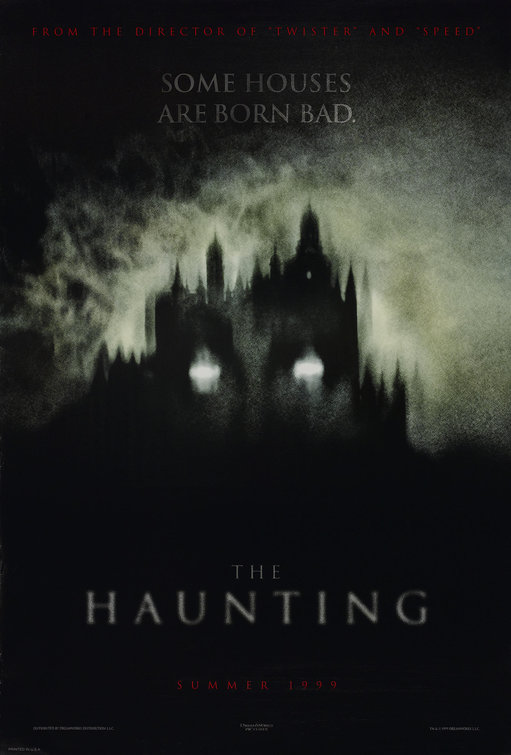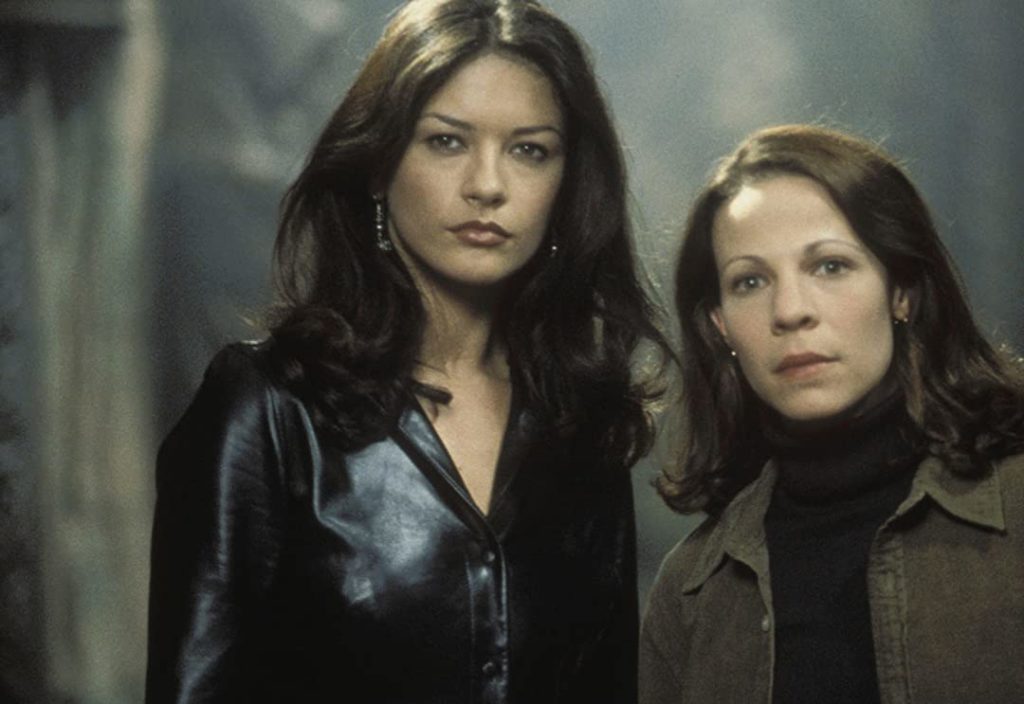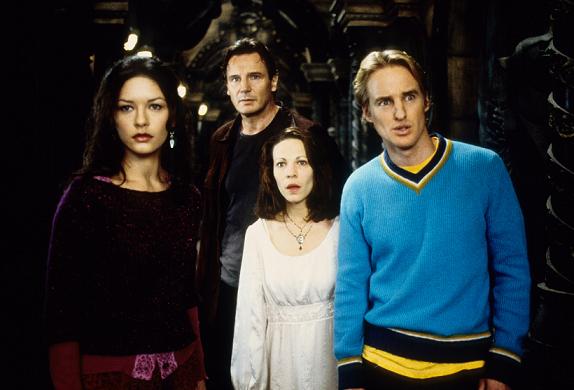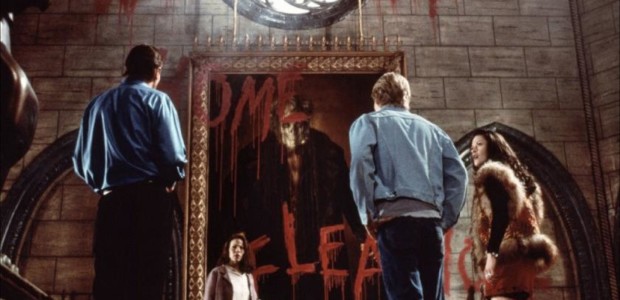Whatever your opinion on ’90s horror may be, it can’t be argued that it was distinctive, in its extravagant, largely-CG special effects, extraordinarily attractive casts, and stubborn commitment to distancing itself from “traditional” horror. In keeping with this were a number of in-name-only remakes of horror classics, including THE HOUSE ON HAUNTED HILL, THIRTEEN GHOSTS, and THE HAUNTING, all of which replaced atmosphere with gore, and had plots so far removed from the original source material that calling them “remakes” would be incorrect. “Cynical marketing ploy based solely on name recognition” would have been far more accurate, particularly when it came to Jan De Bont’s 1999 take on THE HAUNTING.

THE HAUNTING was ostensibly based on Shirley Jackson’s The Haunting of Hill House, named by no less than Stephen King as one of the greatest horror novels of all time. A masterwork in subtlety, The Haunting of Hill House relied not just on classic haunted house story tropes, but also on an unreliable narrator in protagonist Eleanor Vance. Eleanor, sheltered and insecure, is gradually revealed to be emotionally unstable, and, despite her initial fear of the eerie, imposing Hill House, grows attached to the point of obsession with it. At the conclusion of the novel, rather than be forced to leave the house and return to her empty, lonely life, she drives her car into a tree on the property. It’s open to the reader’s interpretation as to how much of the supernatural goings-on in Hill House were real or in Eleanor’s imagination, and whether her death was by her own hand, or caused by malevolent forces.

Fresh off the massive success of SPEED and TWISTER, De Bont seemed like a puzzling choice to adapt Jackson’s work. De Bont specialized in big dumb action movies, which looked great but featured paper-thin characters driven by the simplest motivations. The Haunting of Hill House above all else is character-focused, and how they react to the frightening things they may or may not be seeing, rather than the frightening things themselves. Robert Wise’s 1963 adaptation respected this, relying largely on clever sound design and solid performances from the film’s stars (particularly Julie Harris as Eleanor) to get the point across. What makes both the novel and the original adaptation so effective is how much is left to the reader’s imagination. We know bad things happen in Hill House, but we never find out why. It’s just a bad place, built on sour ground. It’s right there in the legendary opening and closing paragraph: “Whatever walked there, walked alone.” We never know what or who “whatever” is.

The 1999 version of THE HAUNTING looks as though De Bont, along with screenwriters David Self and Michael Tolkin, read the book and watched Wise’s adaptation, deemed them to be boring, and then added an entirely new subplot involving child murder and “ghost families.” They were determined to turn it into a special-effects spectacle, where it wasn’t enough to merely suggest the presence of evil, it had to come out of the walls and the floors of Hill House, literally twisting its structure around so that its windows look like malevolent eyes. In this version, Hill House isn’t so much a house as an endless series of carnival escape rooms, with one room containing a rotating floor, and a hallway inexplicably filled with water. The violence is amped-up too, with one character beheaded by an absurd Chekhov’s gun — Chekhov’s chimney flue, you might say.

Make no mistake — it looks awesome. The set design is astonishing, where almost everything in Hill House not only looks like it might be alive, but is watching you. Unfortunately, it’s all in service to a plot devoid of any meaning or impact. Turning Hugh Crain, a mysterious, distant figure in the novel whom the characters don’t even encounter, into a literal serial killer, doesn’t make Jackson’s plot scarier. It’s a cheap shock tactic for audiences perceived to be too dumb for subtlety.

Things seemed off to a good start initially, with the casting of Lili Taylor as Eleanor. Taylor’s uniquely fragile, yet vaguely sinister manner would have been a perfect fit for the role — had they intended on making it a faithful adaptation. Instead, she’s wasted here, playing a character who’s more quirky than troubled, with everything that makes Eleanor interesting and compelling stripped away. Perhaps most unforgivably, rather than having her die as another victim of Hill House, bringing the story full circle (literally — the closing paragraph is almost identical to the opening paragraph), in this version Eleanor sacrifices her life to defeat Hugh Crain, and remains in the house as a sort of surrogate mother to the ghosts of Crain’s child victims. The evil in Hill House has been vanquished, effectively eliminating even the slightest bit of impact the original story might have made.

Again, one wonders why screenwriters Self and Tolkin didn’t simply change the characters’ names, rename the movie THE HOUSE IN THE OLD DARK HILLS or something similar, and call it a day. But we know why: Because they didn’t think audiences would go to see a movie called THE HOUSE IN THE OLD DARK HILLS. Although Shirley Jackson’s work had not yet achieved the widespread respect it has today, there was at least some familiarity with it at the time, if for no other reason than Stephen King’s ringing endorsement. Instead of working with the modern ur-text on telling ghost stories as it was, however, everything that made The Haunting of Hill House special and unsettling was whittled away to almost nothing, an empty shell turned into a garish funhouse.

In 2018, Mike Flanagan adapted The Haunting of Hill House into a ten-episode series for Netflix. Though he, too, took significant liberties with the story, changing it so that the protagonists were the owners of the house, it was clear that Flanagan respected Jackson’s story, and successfully maintained the spirit of it. Flanagan understood what fans of the novel understand: that whatever walks in Hill House feeds not on gore and horror, but something far more insidious: tragedy and sorrow.
Tags: Bruce Dern, Catherine Zeta-Jones, David Self, Horror, Jan De Bont, Jerry Goldsmith, Karl Walter Lindenlaub, Liam Neeson, Lili Taylor, Marian Seldes, Michael Kahn, Michael Tolkin, Owen Wilson, remakes, Shirley Jackson, Suspense, The 1990s, Virginia Madsen


No Comments